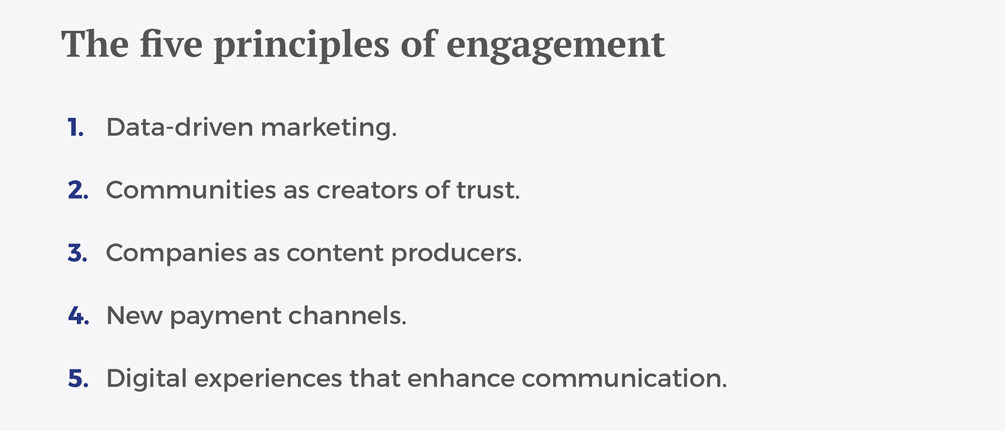Communication—particularly the areas of marketing and advertising—has been heavily impacted by digitalization. Media and methods have changed as brands have shifted their outlook in today’s palpably globalized world. Branding is a private hunting ground for peregrine falcons—by some measures the fastest animals on earth. This cultural shift has been bolstered by rising investment in digital media campaigns over the past few decades. Television was once the premier platform for spreading messages, but the Internet has upended the rules and transformed us all into multiconnected, overinformed customers. In the face of this technological avalanche, the four classic Ps of marketing—product, price, place, and promotion—seem incomplete and obsolete. Nowadays, the most important P is people.
The new marketing mix
Marketing departments and agencies must begin by turning their attention to people. When publicizing a product or service, the first step is to understand the community. Once you’ve done that, you can gradually introduce sales and customer-service processes, but without neglecting consumer engagement—a key concept in this day and age.
The growth in sales of wearables is just one indication of society’s widespread embrace of mobile devices, not to mention the vast amount of information now available anytime and anywhere. Understanding this degree of dependence on new gadgets is the first step towards winning the tough battle of marketing. Adopting the digital culture is synonymous with understanding the customer.
Companies have made people—in the broadest sense of the term—the centerpiece of their strategy, and their business models have shifted accordingly.
The humanization of companies
This new paradigm is also transforming companies into centers for the study of human behavior. This broadens the range of possibilities: besides customers, companies can also study their own employees and society at large. Companies have made people—in the broadest sense of the term—the centerpiece of their strategy, and their business models have shifted accordingly.
Today’s companies have their sights set on three objectives: developing a strategy that generates value in the social sphere, providing experiences that reliably satisfy consumers, and maintaining an empowered staff in a collaborative work environment. These three deeply intertwined pillars are the key to addressing the challenge of business transformation.

The aim of marketing is to engage with interest groups—starting with employees. The great aspiration of any marketing department or agency is to act as an ambassador of a product or brand. Engagement can be summarized in five principles:
- Data-driven marketing. Data leads to knowledge, and knowledge leads to profitability. Relationships are created through bidirectional messaging and this data traffic is analyzed with technology, practically in real time.
- Communities create trust. Consumer reviews are considered 12 times more reliable than a brand’s messaging. In fact, millennials trust customer reviews more than their friends’ opinions. Most factors that influence a purchasing decision emanate from users, not companies. Marketing has shifted from the target to the community.
- Media companies and content producers. Besides making toys, Lego has transformed its product into the star of movies and video games.
- Creativity in payment channels. With the consumer at the center of the action, greater community engagement can be achieved by offering more—and more creative—payment channels.
- Digital experiences integrated into products. An initiative by KLM illustrates this principle. On its booking website, the airline introduced a system that allowed customers to connect with fellow passengers through social media. Though ultimately unsuccessful, the initiative allowed KLM to become acquainted with digital experiences.
Most factors that influence a purchasing decision emanate from users, not companies. Marketing has shifted from the target to the community.
The value of failure
An entity’s conception of failure provides a clue as to whether it is successfully adopting this 2.0 culture. Fear of failure has no place in 21st-century strategy. Trial and error is the new mantra. Indeed, the theory of “fail often, fail quick, fail cheap” is the very definition of innovation. Today’s companies spend a lot more time implementing plans, measuring their impact, and adapting their strategy according to the results of this analytical exercise.
© IE Insights.











